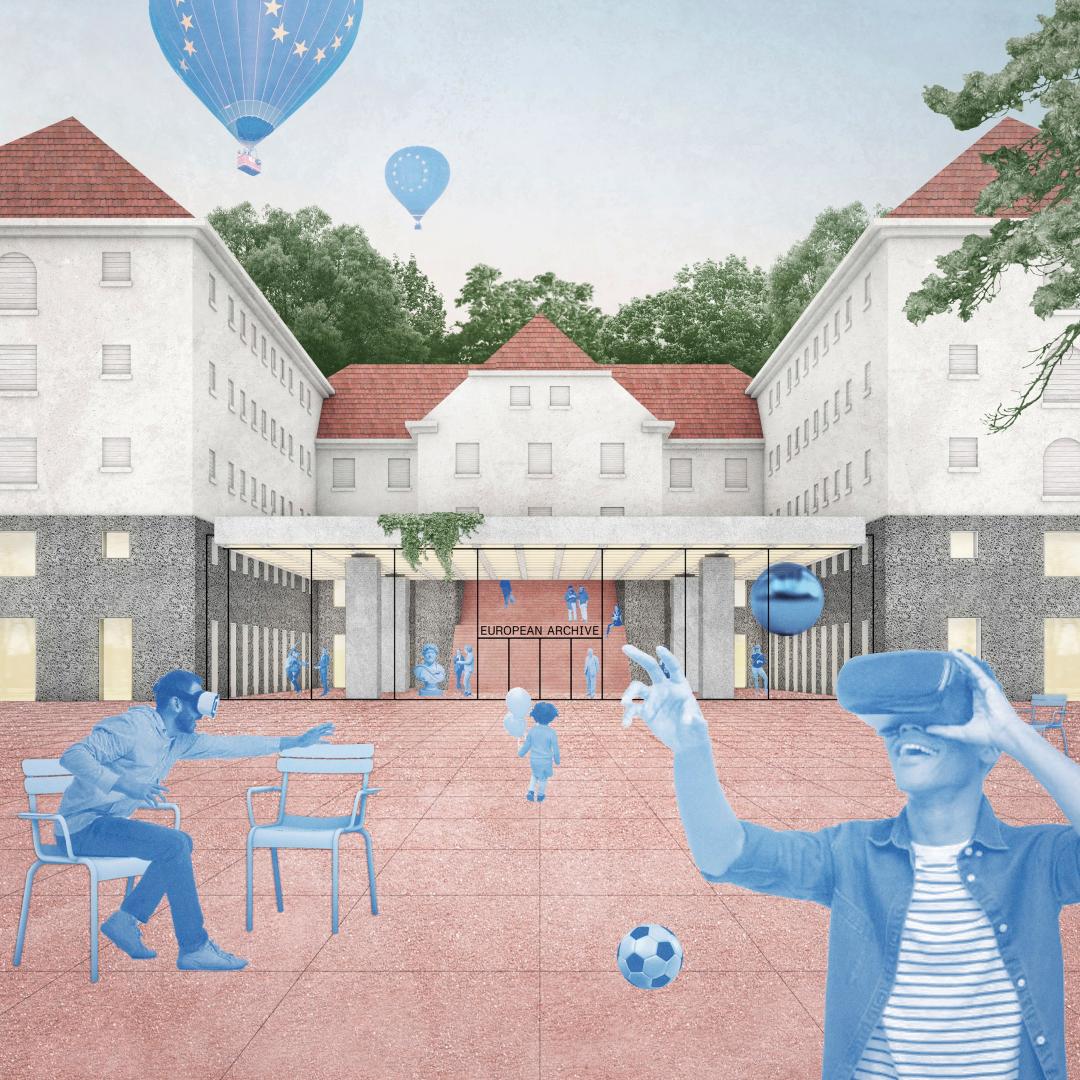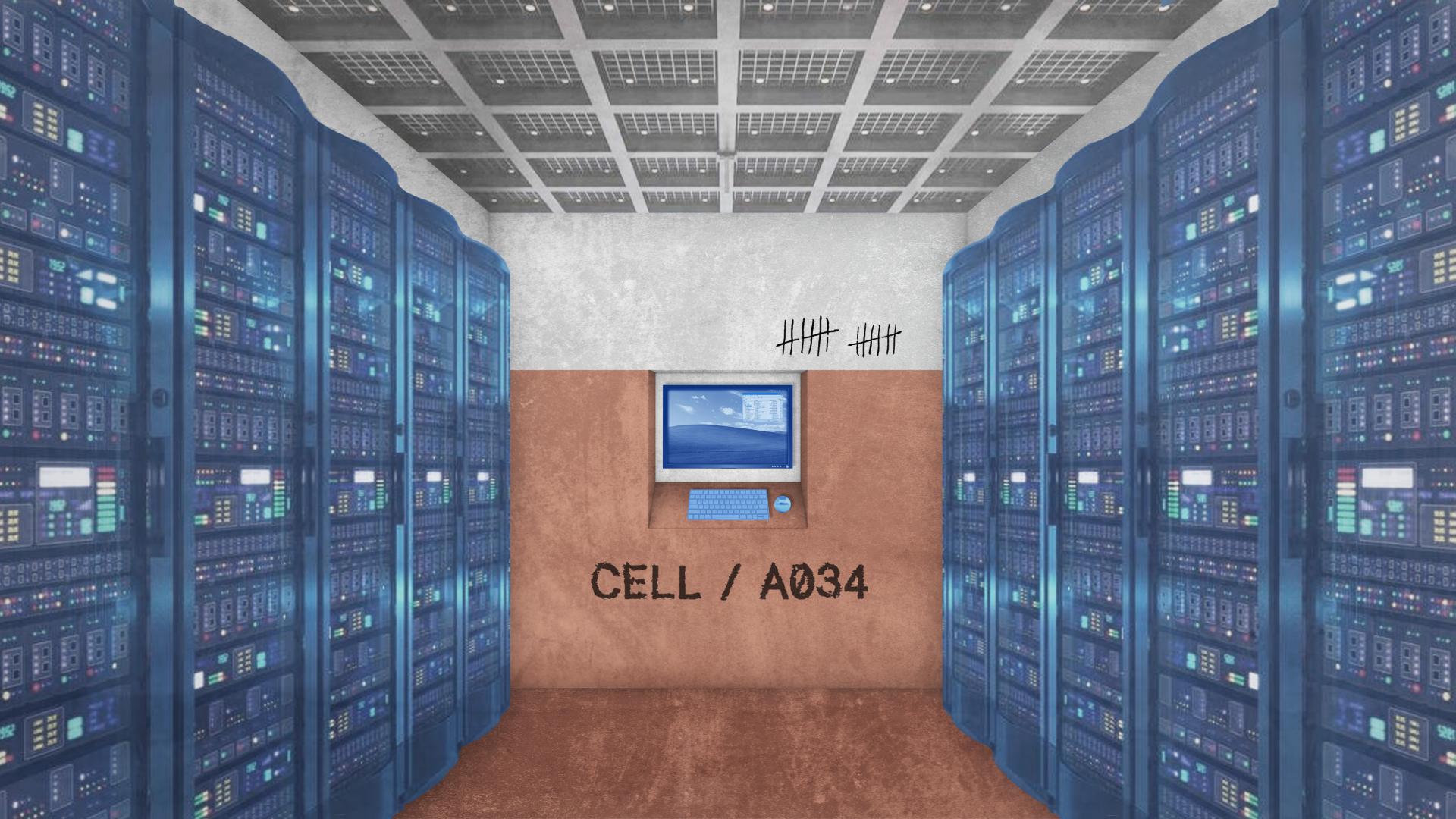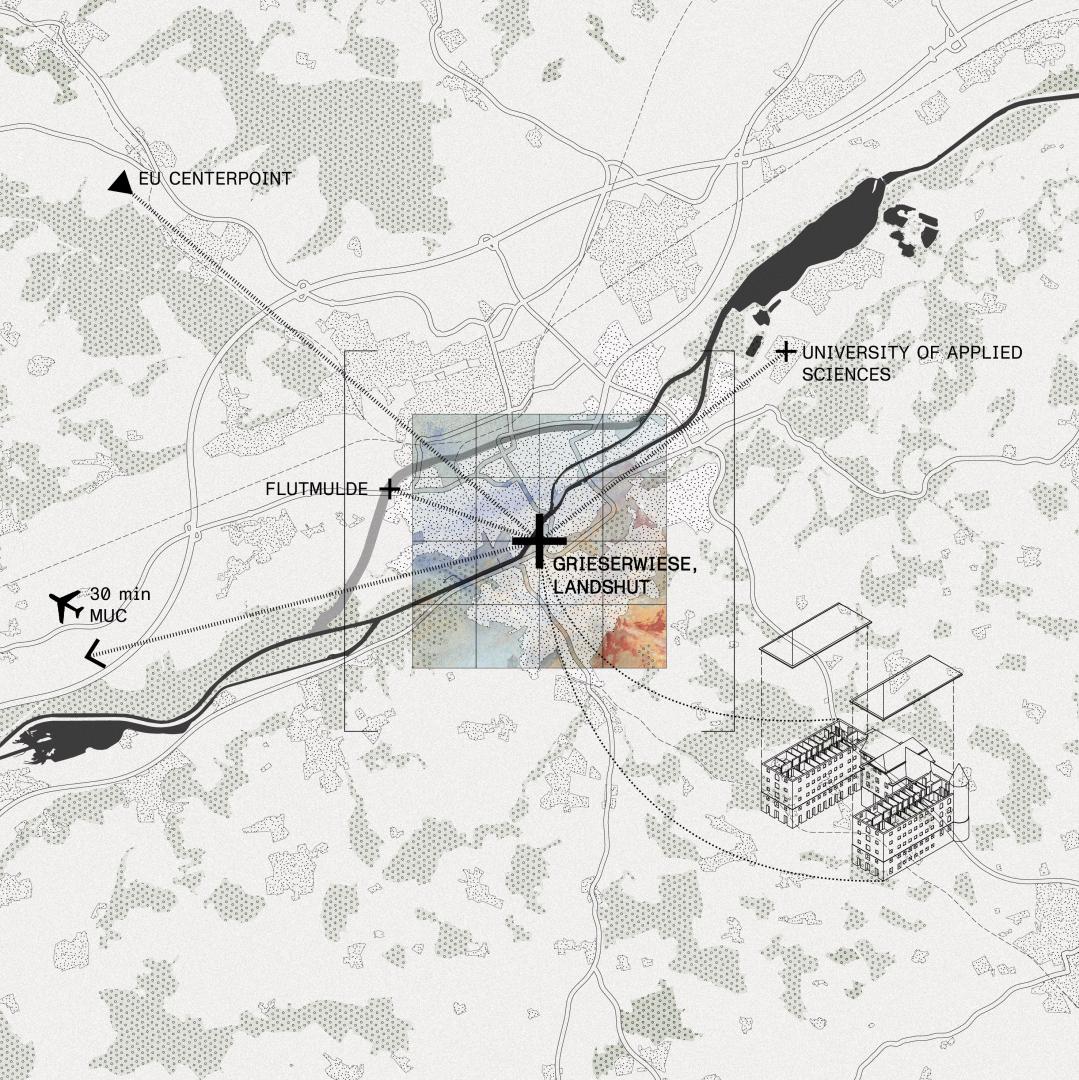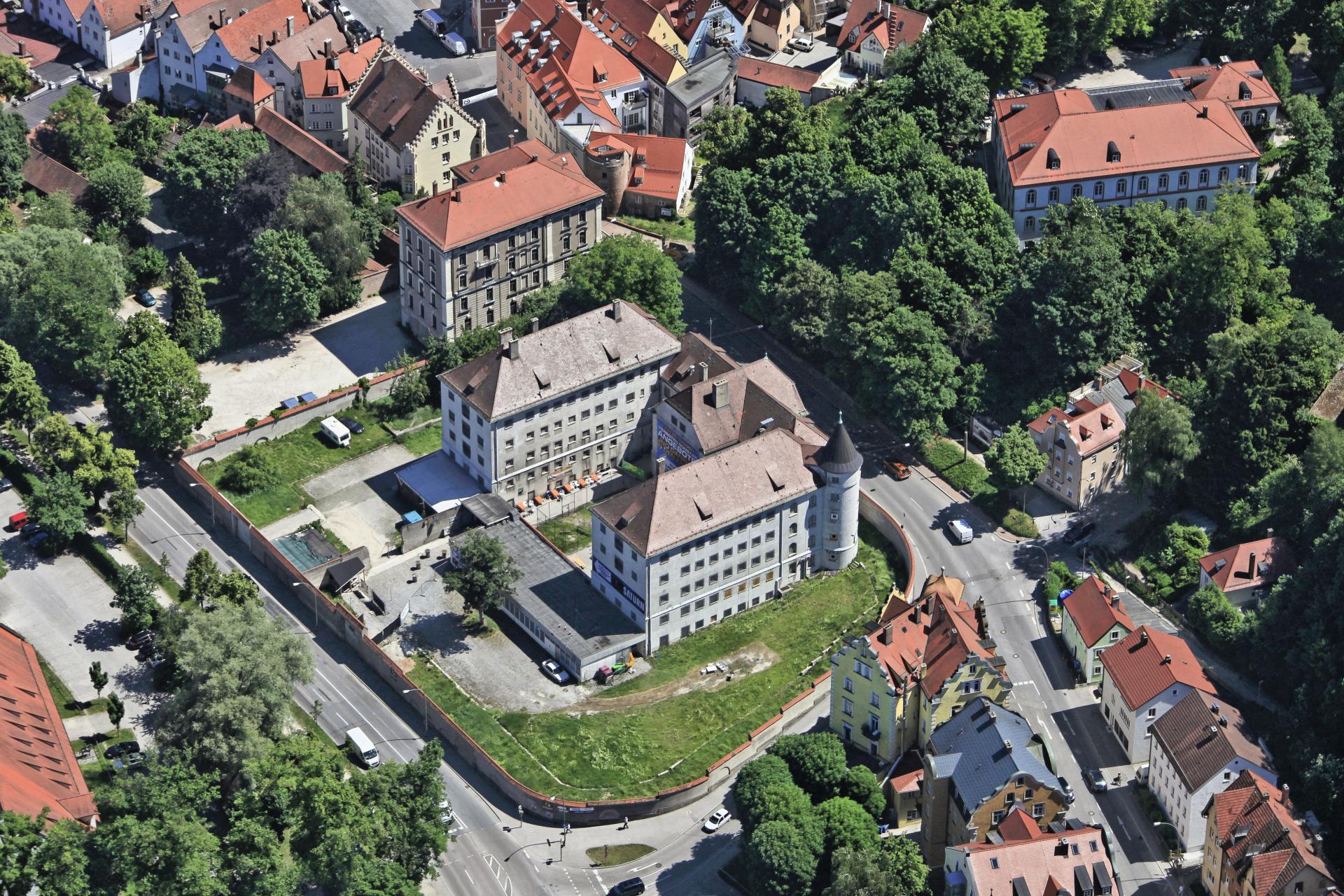Archive of European Culture
Basic information
Project Title
Full project title
Category
Project Description
In an effort to strengthen our collective European identity, this project proposes to convert a former correctional facility and its adjacent park into an archive of European cultural heritage. While the prison will function as a digital archive, the nearby park will be used to display cultural elements which can not be digitised. By actively preserving and celebrating what defines us as a democratic union, we can build a commonality between member states and ideally make the EU more cohesive.
Geographical Scope
Project Region
Urban or rural issues
Physical or other transformations
EU Programme or fund
Which funds
Description of the project
Summary
Archive of European Culture is a conceptual idea that proposes to revitalise the old prison of Landshut by transforming it into a data centre and connect its functionality as a storage facility to the EU HORIZON program, which supports initiatives that aim to digitally preserve our European heritage. The project furthermore suggests that digitisation alone is not sufficient, as some cultural aspects — traditions, cuisines, sports and crafts — are intangible and can not be digitised. To preserve them, a central place is needed where they can be practiced, spectated and passed on to others.
The project site is in Bavaria, Southern Germany and was proposed by the city of Landshut for the Europan 16 competition, as it is in need of revitalisation. The city being located at the very heart of the European Union coincidentally also has an ideal infrastructure, with only 30 minutes to Munich airport, the nearby flood channel, which protects the city from severe flooding and the local University, which could provide the research and maintenance to keep the archive running. Arguing that a prison is the ideal typology for safekeeping, the abandoned correctional facility is perfect for such a functionality — once built to protect the environment from its prisoners, it could inversely also protect precious content from environmental threats.
The design strategy consists of two consecutive phases: First and foremost, the prison will become the digital archive: a protected digital storage facility preserving our collective heritage. The upper floors of the building will provide space for the server stations, while the ground floor will function as a public forum. The project then expands into the nearby park. Without diminishing the existing green space, various existing and added buildings will provide space to practice, showcase, teach and preserve the intangible parts of our culture.
Key objectives for sustainability
Circularity in architecture will play a key role in reaching our much needed climate goals. Cement production is the source of about 8% of the world’s CO2 emissions (Chatham House, 2018), so maximising the lifespan of any building is crucial. Adaptive reuse strategies offer a sustainable alternative, as they require far less construction material than newly built projects and ideally render the lifecycle of a building endless.
Since its closure in 2008, the former correctional facility of Landshut has struggled to find a new permanent function. The cell-structured interior and the small windows behind bars make the building unsuitable for most alternative types of use, like for example living or working. Reusing the building as a data centre fits the interior structure like a glove. Demolition and construction can be kept to a bare minimum, as data servers can be easily compartmentalised into the existing cells and have no additional daylight requirements.
Data-centres create a lot of heat when operating, usually requiring powerful cooling equipment. A new technology is being developed in the US that uses river water as a sustainable means to cool server rooms (https://nautilusdt.com). Since the project site in Landshut is located in close vicinity to the Isar river, this technology could be explored as a possibility to also make the building sustainable in its use.
Key objectives for aesthetics and quality
To a city, nothing is more aesthetically and existentially unpleasing than an unused building. It undermines the very purpose it was originally built for: to provide space to accommodate human activities. In the case of Landshut the abandoned prison is a particular thorn in the eye, as it also marks the entrance to the old city centre.
A permanent and public function, like the one this project proposes, would be a great aesthetic improvement to the urban fabric. It would make a formerly privatised and unused building accessible to the general public, which would guarantee its upkeep and would result in a continuous liveliness in and around the building. While the server rooms on the upper floors will be locked for safety reasons, the ground floor will function as an interface between visitor and archive and form a public gateway from the river park to the old city centre of Landshut.
Furthermore, the design for the park will also undergo an aesthetic improvement. Currently half of the park is occupied by a large parking lot. Arguing that the use of shared mobility and public transport will increase in the future as a means to progress towards more sustainable forms of transportation, the project proposes to transform the parking lot into additional green spaces.
Key objectives for inclusion
First and foremost, the project is intended as a place for all; it aims to offer a physical space for people from all EU member states to connect with one another by providing democratic access, both digitally and physically, to our shared European cultural heritage. Furthermore, public participation will be the key element that will make the preservation of our cultural heritage possible, as the intangible parts of our culture need to be actively practiced, performed and taught in order to preserve them.
The digitised data which will be stored on the data-servers of the former prison will be accessible through a public online portal, as well as locally via the forum. The latter will also function as a public educational facility. The park forms an extension of this educational facility in the sense that it will contain various spaces in which cultural heritage is actively preserved through public participation in the form of performances, workshops and courses.
Physical or other transformations
Innovative character
The proposed project integrates all dimensions into one holistic strategy. First and foremost it creates a public space inclusive to all European (and non-European) citizens which provides equal access to our common cultural heritage. It also improves the urban fabric of Landshut by providing an aesthetically pleasing entrance to the city centre by integrating an important public function and lastly it proposes an adaptive reuse strategy for a building of political importance.
Even though it is inevitable that our requirements for buildings change as society progresses, we need to critically assess when a structure is actually to be considered obsolete. Instead of proposing the construction of a new landmark, which would be the conventional approach for a building with political importance, using an adaptive reuse strategy could be considered a statement that, to the EU, environmental sustainability is more important than political ideology.






